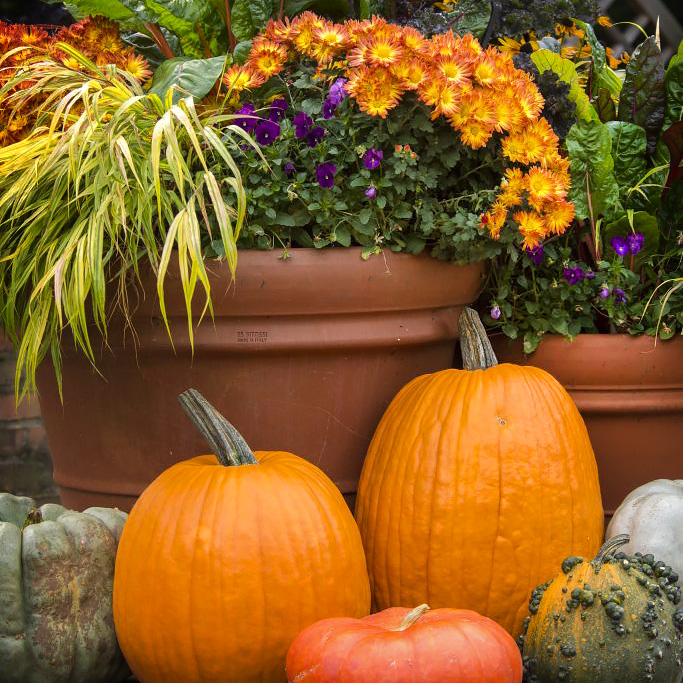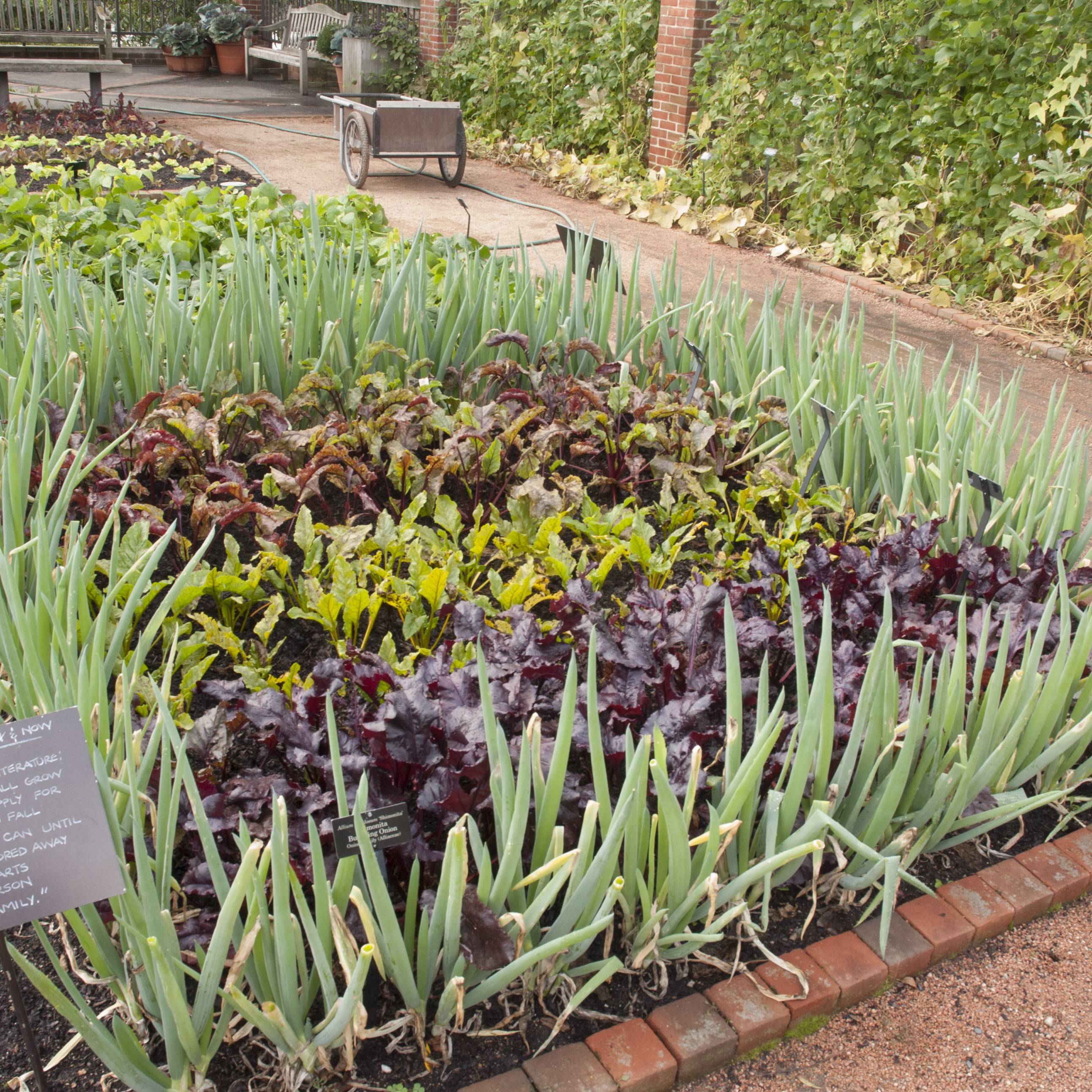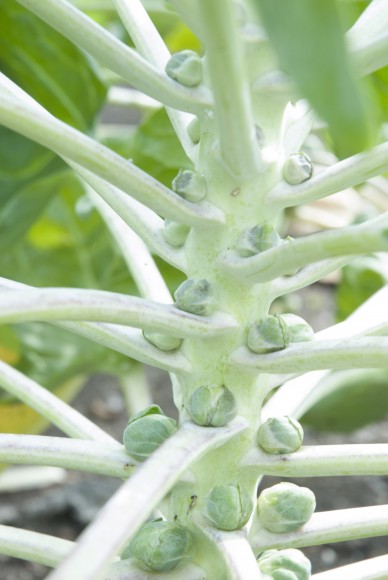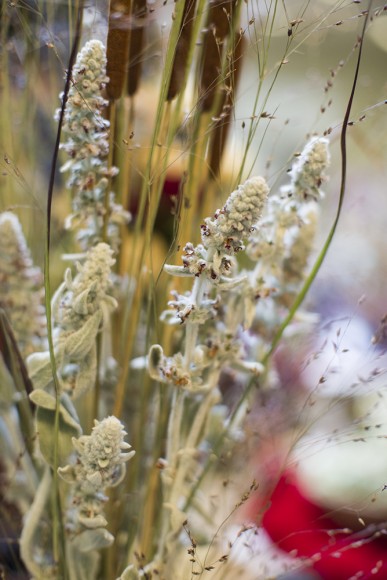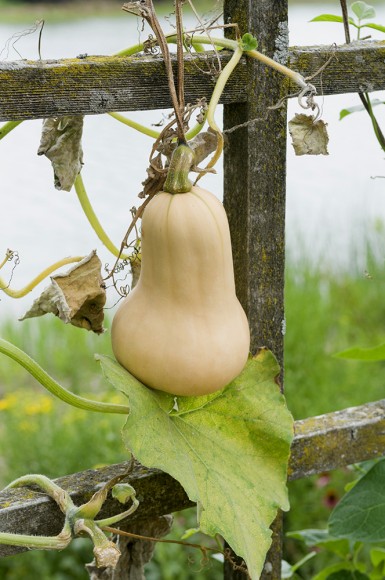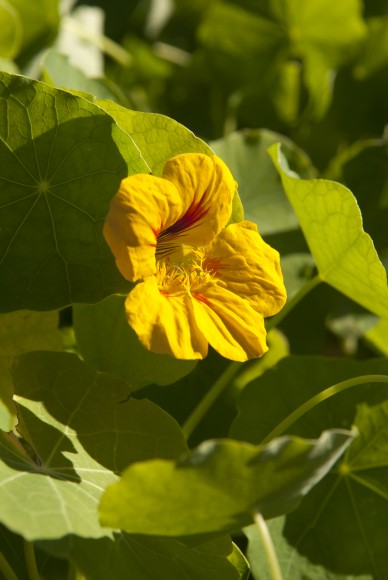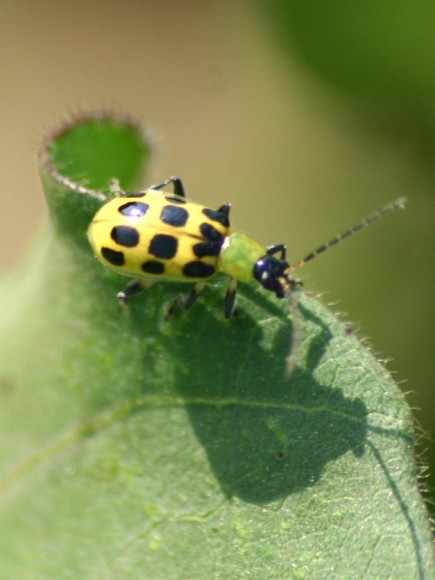Are your summer container gardens in need of a fall makeover? Good news! There are many fall-flavored plants that will provide you with texture, form, and long-lasting colors in both flowers and foliage.
I love the combination of purple or blue asters (Symphyotrichum) with ornamental kale as the colors play off each other nicely for a long-lasting fall container. Using other lesser-known plants, such as some of the fall-blooming Salvias or sage can add height and lend to very interesting combinations in your container gardens. Try using cold-hardy vegetables and adding herbs to create interest and texture to any combination. I like using Swiss chard, broccoli, Asian greens, parsley, and onions (Allium) for interesting and colorful effects.
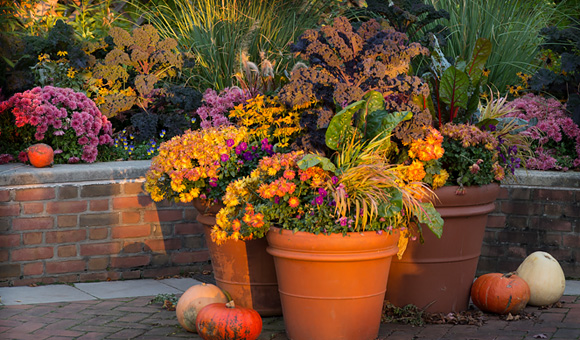
Here are a few tips for planning your fall containers:
- To achieve a fuller effect, use more plants than you would in the spring or summer. As the days begin to get shorter and the nights get cooler, plant growth is slowing down or ceasing. By planting a fuller container, you will see immediate results that can last for the remainder of the fall season.
- Try to plant by early September to give your plants a chance to kick in with some growth before the cooler temperatures and shorter days slow things down. Remember, many plants available for fall container gardens can take temperatures in the 20s Fahrenheit without being damaged, while many plants actually begin to show better foliage colors with cooler temperatures. These include ornamental kale and cabbage, Heuchera, and many ornamental grasses as well.
- Select plants that have a variety of tones that contrast and set off each other. Think about using colorful cultivars of Heuchera for their many foliage colors, and colorful grasses or grass-like plants, such as Pennisetum, Carex, Juncus, or the black foliage of Ophiopogon. See the list below of other fall plants to consider for your containers.
- Remember, a pot of mums looks fresh for three to four weeks at most, and then the show is over. Showy foliage from grasses or kale and cabbage will carry the display much longer.
- The fall foliage on evergreen succulents (Sempervivum ‘Hens and chicks’), and many of the stonecrop (Sedum) cultivars changes and develops more dramatic color once the temperatures stay cool.
- If you must have flower power, consider long- and late-blooming Salvia, Cuphea, or fall pansies or violas.
- When nighttime temperatures drop below freezing, have light blankets, large pots, or even an empty trash barrel handy to cover your container and protect the plantings from frost.
- As November passes, the time will come to disassemble your planter. Carefully place your hardy plants in a nursery bed or empty space in your vegetable garden plot to hold them over until next spring, when you can plant them in a permanent home to enjoy for another season.
Here are a few fall plants and items that can be added to your fall container gardens:
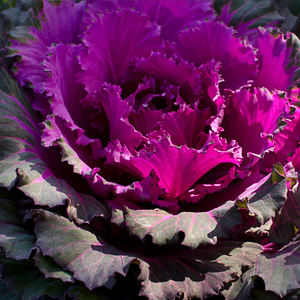
Annuals:
- Calibrachoa varieties
- Capsicum, ornamental peppers
- Dianthus cultivars, ‘Sweet William’ and other Pinks
- Brassica varieties, ornamental kale and cabbage
- Tagetes, marigolds
- Pansies and violas
- Helianthus, sunflowers
- Plectranthus
- Salvia, sages
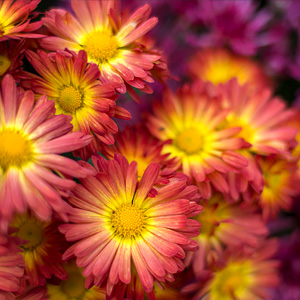
Perennials, trees, shrubs:
- Anemone hybrids
- Aster cultivars
- Chrysanthemum, hardy fall mums
- Helianthus and Helianthoides, perennial sunflowers
- Rudbeckia, black-eyed-Susan
- Boltonia
- Sedum and Sempervivum, and other succulents
- Fall foliage color with trees and shrubs; maples, cornus, viburnum, spirea, and others
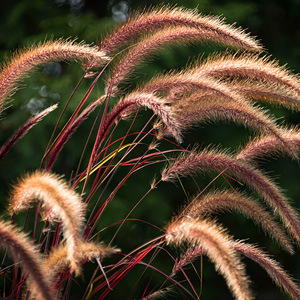
Ornamental grasses:
- Miscanthus cultivars
- Panicum cultivars
- Pennisetum cultivars, including ornamental millet
- Muhlenbergia, Muhly grass
- Stipa tenuissima, Mexican feather grass
- Schizachyrium scoparium, little bluestem
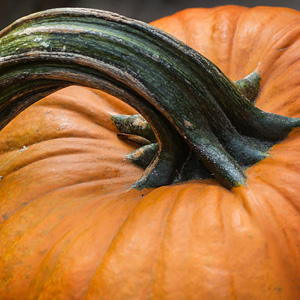
Other fall items:
- Pumpkins
- Gourds and squash
- Corn stalks
- Straw
- Branches
- Fall decorative items; scarecrows, Halloween and Thanksgiving decorations
©2018 Chicago Botanic Garden and my.chicagobotanic.org

